Most people envision living on a boat to be quite relaxing and stress free. And trust us, there is a lot of relaxing on board. But, living on a boat also has its own constant level of stress.
Living on board a “new to us” boat means learning all the different noises, smells, and sights of the boat. This is most important especially if one of those noises, smells or sights changes unexpectedly.
This heightened sense of awareness can result in a constant level of stress, affecting sleep, and overall enjoyment. We can attest this has been true for us this first year on board.
Water pumps that come on, crackling noises on the hull, banging of shrouds, and more keep us alert.
Imagine our surprise and ultimate concern when back in November on (US) Thanksgiving Day night in the middle of the night around 2am, we were awakened by a new sound.
At first we thought it was a neighboring boat’s wind generator, but when we popped our heads up through the companionway we could not hear the sound outside.
Uh oh! That means it is coming from our boat! As the fog of sleep quickly cleared, we pondered what could be causing this whining mechanical noise.
It was only then that we noticed the automatic bilge pump light was illuminated. We flicked the switch off and the sound went away.
First mystery solved – but now for all the questions and concerns that get raised because of it.
- Why did the bilge pump come on? – The bilge pump is set to automatically come on when it detects water in the bilge and pumps the water out. In the 6 months we had been living on the boat at the time, the bilge pump never came on.
- We were thankful the pump did come on – but why was there water in the bilge? Where was the water coming from? Was there a leak? and where?
- Why didn’t the bilge pump shut off automatically when the water was evacuated?
We knew there wasn’t much we could do at the moment, the boat didn’t seem to be in immediate danger, we have a second bilge pump which had not been activated and we were safely tied up in a marina so we could get help quickly if so needed. We set the pump back to automatic, and went back to sleep pondering the many possibilities.
Two nights later, again at 2am, the pump came on again and didn’t shut itself off. Urgh!
We concluded we do indeed have two separate issues:
- Water is getting into the bilge
- The pump is faulty and won’t shut off
At this point we were halfway through our 2 month journey to Florida and decided to monitor the situation and try to figure it out. So, when we would stop for the night each day we would switch the bilge pump to “on” to pump out whatever water was in the bilge. Then reset it to “automatic” so it would come on if water was detected. This plan solved the middle of the night alarms.
But knowing we had the problem meant we were not going to be comfortable leaving the boat for a weekend getaway on land until things were fixed.
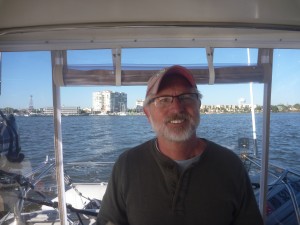 After waiting an extra day due to a cold front and strong Northerly winds, we left Cocoa, Florida on Tuesday, 23 March to begin our transit North, back to the Chesapeake Bay.
After waiting an extra day due to a cold front and strong Northerly winds, we left Cocoa, Florida on Tuesday, 23 March to begin our transit North, back to the Chesapeake Bay.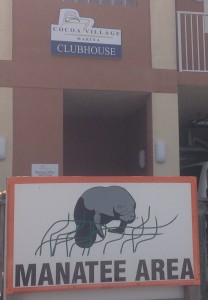
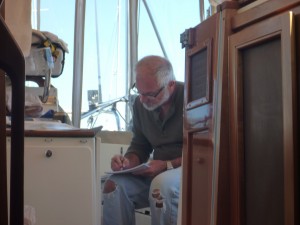
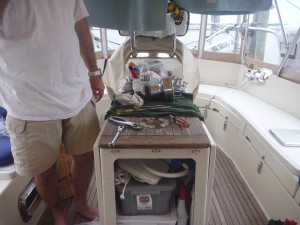
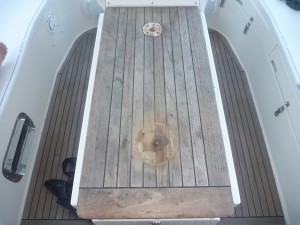
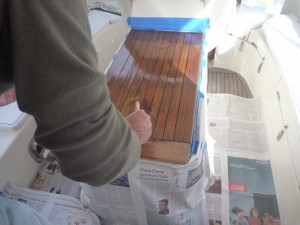

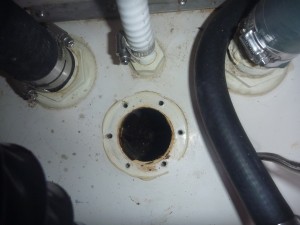
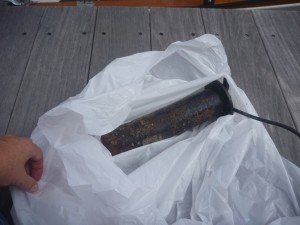
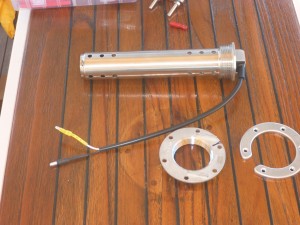
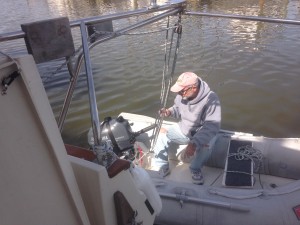 The new Yamaha 6HP 4 stroke outboard has arrived.
The new Yamaha 6HP 4 stroke outboard has arrived.
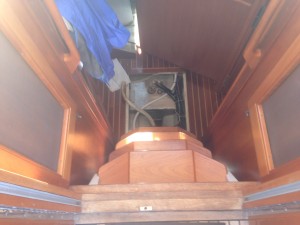
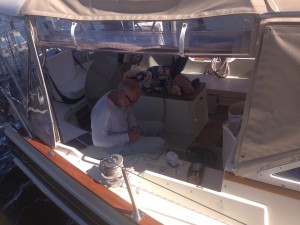
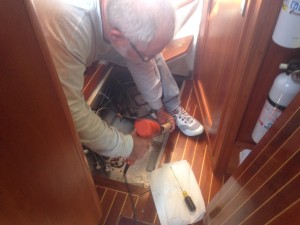
 When it was time to connect and install the new one, the big question arose of how was the old one attached? Did it go on this way….. or that way?
When it was time to connect and install the new one, the big question arose of how was the old one attached? Did it go on this way….. or that way?